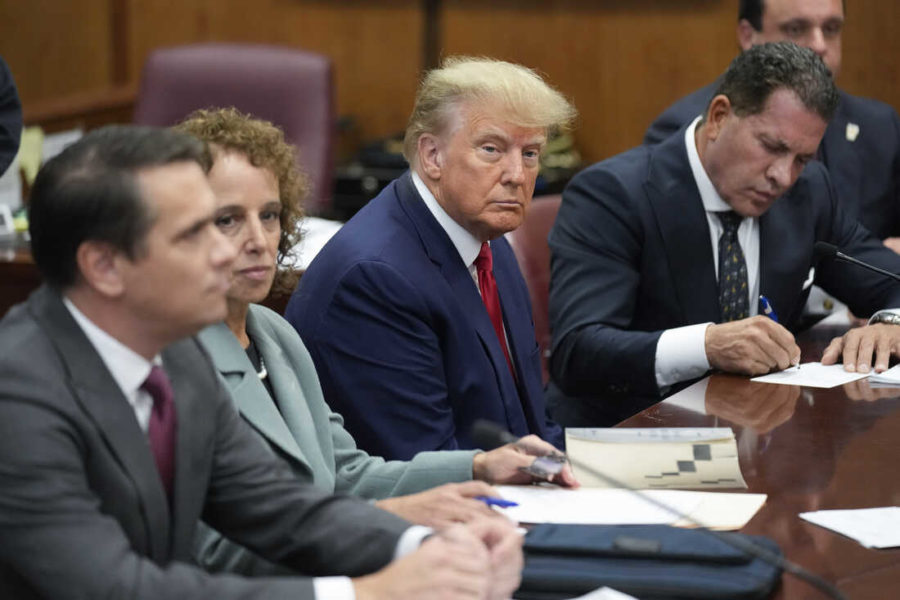A comprehensive guide to Trump’s felony charges
Courtesy of Seth Wenig/Associated Press
Former President Donald Trump sits for his arraignment in Manhattan for 34 alleged felonies, an unprecedented indictment of a former commander-in-chief.
April 7, 2023
Former President Donald Trump has made the news recently due to an indictment involving 34 counts of felony charges by a Manhattan grand jury. These felony charges have to do with falsifying business records to cover up other crimes. According to NPR, “each check was processed by the Trump Organization and disguised as a monthly payment for legal services under a retainer agreement, prosecutors say.”
These checks included a $130,000 hush money payment to adult film star Stormy Daniels in 2016 right before the presidential election. She allegedly had an affair with former President Trump during a 2006 golf tournament. In addition, a $30,000 payment was made to a doorman in 2015 when he threatened to tell the public of a child fathered by Trump illegitimately, though those claims were eventually found to be false.
Where did this investigation come from?
Originally, Trump’s former personal attorney, Michael Cohen, pleaded guilty in 2018 for issuing hush money payments to people such as Daniels from his own personal credit line, with reimbursement checks coming from Trump’s personal checkbook as well as the Trump trust. Since then, Trump and his supporters have questioned Cohen’s legitimacy, though those mumblings were quashed during the Manhattan District Attorney Alvin Braggs’ press conference following the arraignment Tuesday. Braggs stated, “That is exactly what this case is about: 34 false statements made to cover up other crimes. These are felony crimes in New York State no matter who you are. We cannot and will not normalize serious criminal conduct.”
While there are a number of other felony counts, these are a couple of the major ones, which caused Trump to be indicted and arraigned. But what do these terms mean?
Indictment means to be “formally accused of or charged with a crime,” while arraignment is the official reading of these crimes in court to the defendant, where the defendant (in this case, Trump) is allowed to enter a plea. To get to these steps, however, there must be a jury who believes these charges are enough to indict the defendant. As for the plea, Trump is already pleading not guilty to all 34 charges.
Formal indictment and arraignment usually includes steps such as a mug shot and fingerprinting of the defendant, but in Trump’s case, this is a bit of a different process. Because of his Secret Service detail and safety concerns, there was no actual mugshot taken or fingerprinting done. In addition, because Trump is well-known, he is not considered a flight risk, so he was ultimately not taken into custody. Rather, after leaving the arraignment in New York City, he flew back to his home in Mar-a-Lago, Florida, where he can await the next steps in the criminal proceeding.
So what are those next steps?
For now, those include a number of closed-door conversations with lawyers on both the prosecution and defendant sides. Both will be gathering more evidence in support of each claim and formulating arguments based on the discovery of the case. This is not the last we will hear of this, as the next court date is set for Dec. 4 of this year—and, seeing as this is the first president to be charged with a felony when not holding office, it is interesting to see how this will play out and who rallies where. Finally, we will have to wait and see if this affects his reelection prospects, as he has yet to drop out of the race for the 2024 presidential election.



